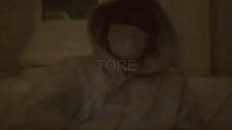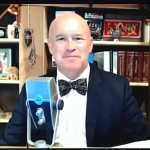ForbiddenKnowledgeTV
March 21, 2015
Tyler Bass
Fourteen years ago the world’s largest chocolate producers signed the Harkin-Engel Protocol, an agreement intended to wipe out the use of child labor in chocolate production. If carried out completely, that agreement stood to make a big difference for the children of the West African nation of the Ivory Coast, from which flows 40 percent of global cocoa production. But from border towns in neighboring countries, via bus and motorcycles speeding down back roads, slave traders are on the move, and selling boys and girls. Each swing of the child slaves’ machetes benefits the bottom line of the world’s largest chocolate companies. Despite signing the Henkin-Engel Protocol, the big chocolate companies said in 2010 they were not responsible for maintaining labor standards, as they outsourced most of the cocoa production process.
As young as ages 10 to 12, child chocolate slaves come from places like Burkina Faso. Each child hits the human market with a price tag around $250. And after their purchase, they do not attend school. Many of them labor fearing beatings, and know misfortune due to the scorn of family members who pushed them to make money early on, should these children prove even that fortunate. Many of them come from neighboring Mali, a country where half are living on just over a dollar a day.
For well-off chocolate consumers outside of West Africa, the award-winning German documentary “The Dark Side of Chocolate†brings essential new meaning to the phrase “guilty pleasure.†Its story is one of sadness but also of hope, as everyday heroes make themselves known in the forms of local police officers, social service workers, and even bus drivers with the courage to act.
One leader of a bus drivers’ union, Idrissa Kanté, said he documented each year over a hundred children trafficked into Ivory Coast, before he put a stop to their exploitation.
One anonymous trafficker suggested that no single person can be held accountable for the fate of these foreign children. With a numb grin on his face, the trafficker, who works by motorcycle, told documentarians, “You can’t pin trafficking on the border on one person. One person takes them to the border, another takes them across, and a third person receives them. It’s not one person in particular. If people on the border say they don’t traffic children, they’re lying.â€
The Ivorian slavers shown in “The Dark Side of Chocolate†know what they are doing is illegal, necessitating that the filmmakers employ hidden cameras, and to claim to work for an aid organization. Investigating human trafficking in Ivory Coast is wrought with extreme danger. Colleagues of journalist Guy-André Kieffer said that senior Ivorian officials were covering up the murder of that French-Canadian investigator, a likely hit that took place in the course of exposing government laundering of cocoa money. Since this film’s 2010 debut, what were possibly Kieffer’s remains surfaced in Ivory Coast.
The CEO of Saf-Cacao, Ali Lakiss, heads one of the largest producers of cocoa, which he sells to Nestlé. Despite many years in the business and a then-recent, headline-grabbing anti-slavery operation by police, Lakiss was adamant no children worked in the cocoa plantations.
Tohe Adam Malick, chief secretary for the Ivory Coast labor department, emphasizes to the German filmmakers that child labor is indeed illegal in the country. Secretary Malick suggested the children that the camera crews encountered were likely just on vacation, especially because the crews were not filming during prime cocoa harvest season.












Add comment